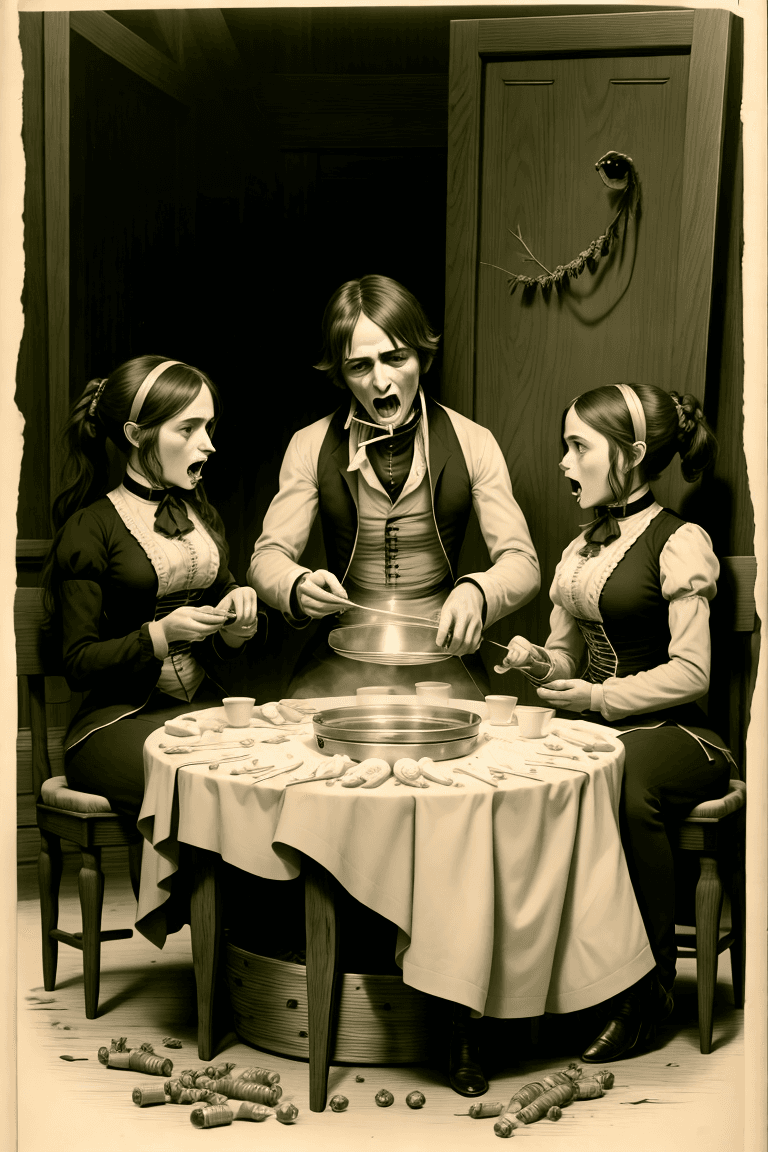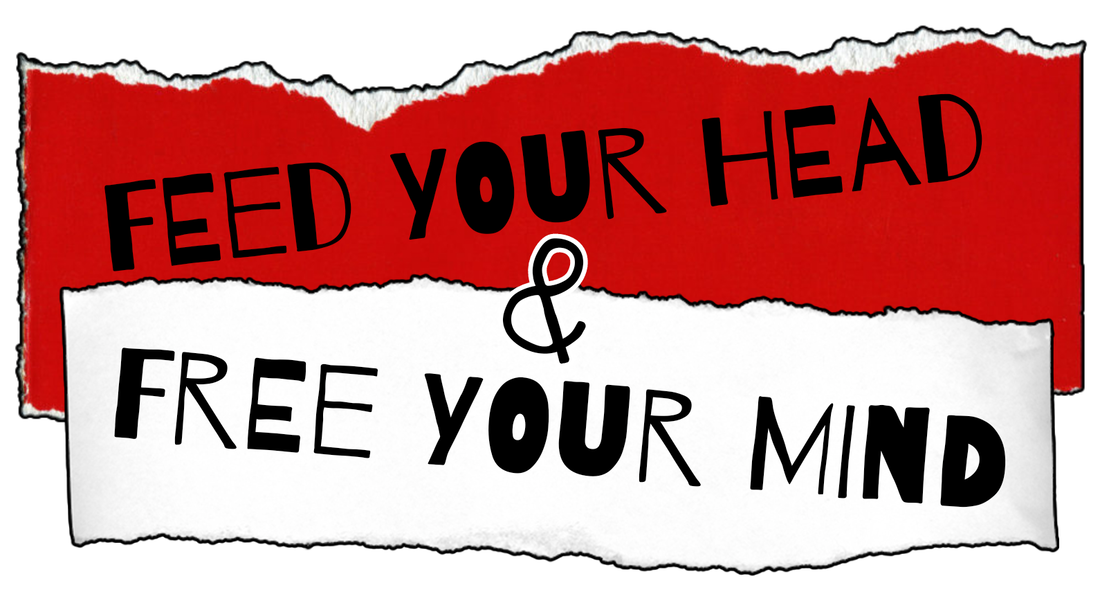|
Gather 'round, folks, and listen up, because this is the tale of the Donner Party, a group of pioneers who thought they could make it to California in style... but boy, were they wrong!
So, the Donner Party set out in 1846, full of hope and optimism, but little did they know, they were in for the ride of their lives. Or, should I say, the ride of their afterlives? Because, let me tell you, this story takes a dark and twisted turn. As they journeyed through the Sierra Nevada mountains, they found themselves stranded in a snowy valley with little food and no way out. And that's when things started to get... interesting.... The Donner-Reed Party: A Tragic Tale of Pioneer Perseverance In the summer of 1846, a group of pioneers set out on a journey to California, seeking a better life and new opportunities. The Donner-Reed Party, as they came to be known, was made up of 87 individuals, including men, women, and children, who braved the unknown to reach their destination. However, their journey would take a tragic turn, and the party would become known for one of the most infamous events in American history. The Journey Begins The Donner-Reed Party was organized by George Donner and James F. Reed, two prominent citizens of Springfield, Illinois. The party was made up of families from Illinois, Ohio, and Missouri, who were seeking land and a better life in California. In April 1846, the party set out from Independence, Missouri, with a wagon train of 200 oxen-drawn wagons, headed west towards California. The group faced many challenges along the way, including rough terrain, harsh weather, and a lack of food and supplies. They followed the California Trail, a well-established route that led to the west coast, but they made several crucial mistakes that would ultimately lead to their downfall. The Tragic Turn As the party journeyed through present-day Nevada, they encountered a series of setbacks. They were delayed by rainstorms, and their supplies were running low. In October 1846, they reached the Sierra Nevada mountains, where they became snowbound in a harsh winter storm. The group was divided, with some members choosing to stay behind and wait for rescue, while others continued on, hoping to reach California. The group that continued on became known as the Donner Party, and their fate is a harrowing tale of survival and cannibalism. Trapped in the snow with little food or shelter, the group began to starve and resort to cannibalism to survive. In the end, only 48 members of the party survived, and many of them were left with severe physical and emotional scars. Aftermath and Legacy The Donner-Reed Party's journey is a cautionary tale of the risks and challenges faced by pioneers in the 19th century. The party's tragic fate served as a warning to future pioneers and helped to establish the importance of proper planning and preparation for such journeys. Today, the site of the Donner Party's encampment is a historical site and a popular tourist destination. The Donner Memorial State Park in California preserves the history of the party and provides a glimpse into the lives of the pioneers who settled the American West. References: • "The Donner Party: A Tragic Tale of the California Trail." National Park Service, U.S. Department of the Interior, 2022, https://www.nps.gov/subjects/caltrail/donner-party.htm. • "The Donner-Reed Party." The History Junkie, 2022, https://www.thehistoryjunkie.com/donner-reed-party/. • "The Donner Party: A Brief History." The Donner Memorial State Park, 2022, https://www.parks.ca.gov/donner/history/. The Donner Party resorted to cannibalism due to starvation and desperation, as they were stranded in the Sierra Nevada mountains during a harsh winter with limited supplies. Here are some detailed information on the victims and the circumstances that led to cannibalism: • The Donner Party was divided into two groups: the Forlorn Hope and the main party. The Forlorn Hope was a group of 15 people who volunteered to go ahead and prepare the way for the rest of the party. They left the main camp on October 22, 1846, and were supposed to meet up with the main party at Truckee Lake (now known as Donner Lake). However, they became snowbound in the mountains and were unable to reach the lake. • The main party, which included the majority of the Donner Party members, left Independence, Missouri, on April 15, 1846, and followed the California Trail to the Sierra Nevada mountains. They reached the mountains in October, but were delayed by rough terrain, harsh weather, and a lack of supplies. • As the winter of 1846-1847 set in, the Donner Party found themselves stranded in the mountains with limited food and no means of escape. The Forlorn Hope group, who were stuck in the mountains, were the first to resort to cannibalism. They ate the bodies of their deceased members, including a woman named Elizabeth Donner, who died during childbirth. • The main party also ran out of food, and on January 15, 1847, they voted to eat the flesh of their dead oxen. However, this was not enough to sustain them, and they soon resorted to cannibalism as well. They ate the bodies of their deceased members, including children and infants. • The cannibalism continued for several weeks, with some members eating the flesh of their loved ones. One member, Patrick Breen, kept a diary that recorded the events of the winter. In his diary, he wrote about eating the flesh of his dead child, saying, "I have been forced to eat the flesh of my own child to save my own life." • The victims of cannibalism included both adults and children. Some of the known victims include: • Elizabeth Donner, who died during childbirth and was eaten by the Forlorn Hope group. • A child named Tamzene Donner, who died of starvation and was eaten by the main party. • A man named James F. Reed, who died of hypothermia and was eaten by the main party. • Patrick Dolan, who died of starvation and was eaten by the main party. • The cannibalism at the Donner Party was not limited to just eating the flesh of the dead. Some members also engaged in cannibalism as a means of survival. For example, a man named William F. Eddy, who was one of the few survivors of the party, later testified that he had eaten the flesh of his deceased companions to stay alive. It's worth noting that the cannibalism at the Donner Party was not unique to this event. During the California Gold Rush, there were several instances of cannibalism among other groups of pioneers who were stranded in the wilderness with limited supplies. However, the Donner Party's cannibalism is one of the most well-known and well-documented cases of cannibalism in American history. The Donner Party's story is indeed a fascinating and tragic one, and it's important to remember the sacrifices and struggles of the pioneers who settled the American West. Some recommended reading includes: • "The Donner Party: A Tragic Tale of the California Trail" by Elinor J. Pruitt: This book provides a detailed and engaging account of the Donner Party's journey and their struggles in the Sierra Nevada mountains. • "The Donner Party: A History of Tragedy, Courage, and Survival" by D. J. Herda: This book offers a comprehensive overview of the Donner Party's history, including the causes of their predicament and the aftermath of their ordeal. • "Across the Wide and Lonesome Prairie: The Oregon Trail Diary of Hattie Campbell, 1847" by Kristiana Gregory: This book is a fictionalized account of a young woman's journey across the Oregon Trail, offering a glimpse into the daily life of pioneer families. • "The Oregon Trail: A Journey of Adventure and Heartbreak" by Rinker Buck: This book is a non-fiction account of the author's journey along the Oregon Trail, exploring the history and significance of the trail and the people who traveled it. There are also many documentaries and historical sites dedicated to the Donner Party and other pioneer groups, such as the Donner Memorial State Park in California and the National Historic Oregon Trail Interpretive Center in Wyoming. These resources offer a deeper understanding of the challenges and triumphs of the pioneers and the impact of their journeys on American history.
0 Comments
Leave a Reply. |
The pbdc collective incArchives
May 2024
Categories |


 RSS Feed
RSS Feed
